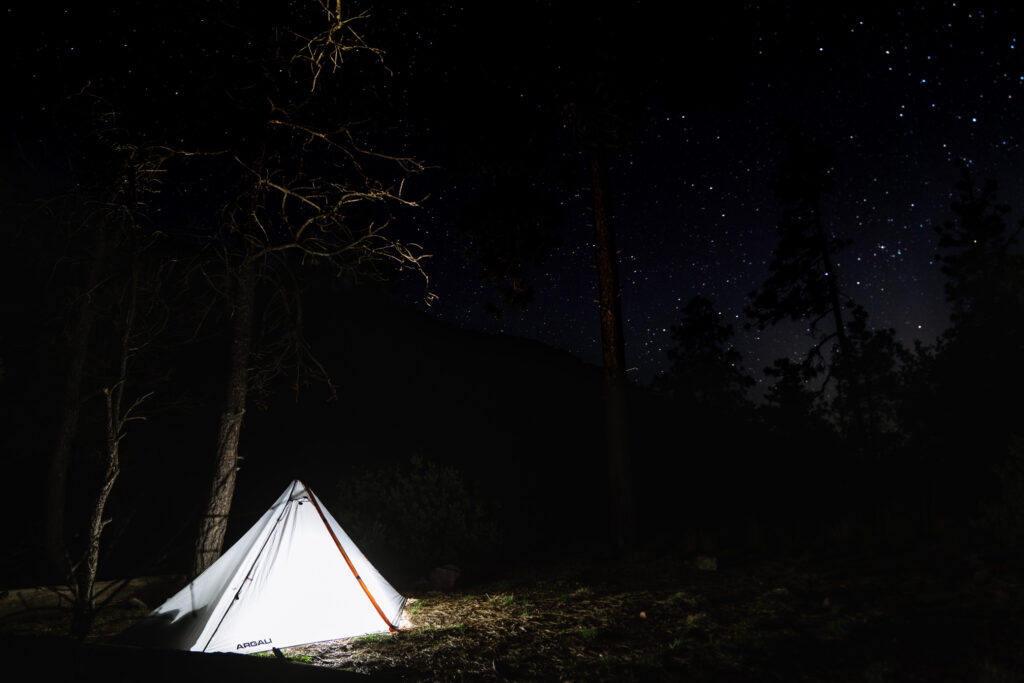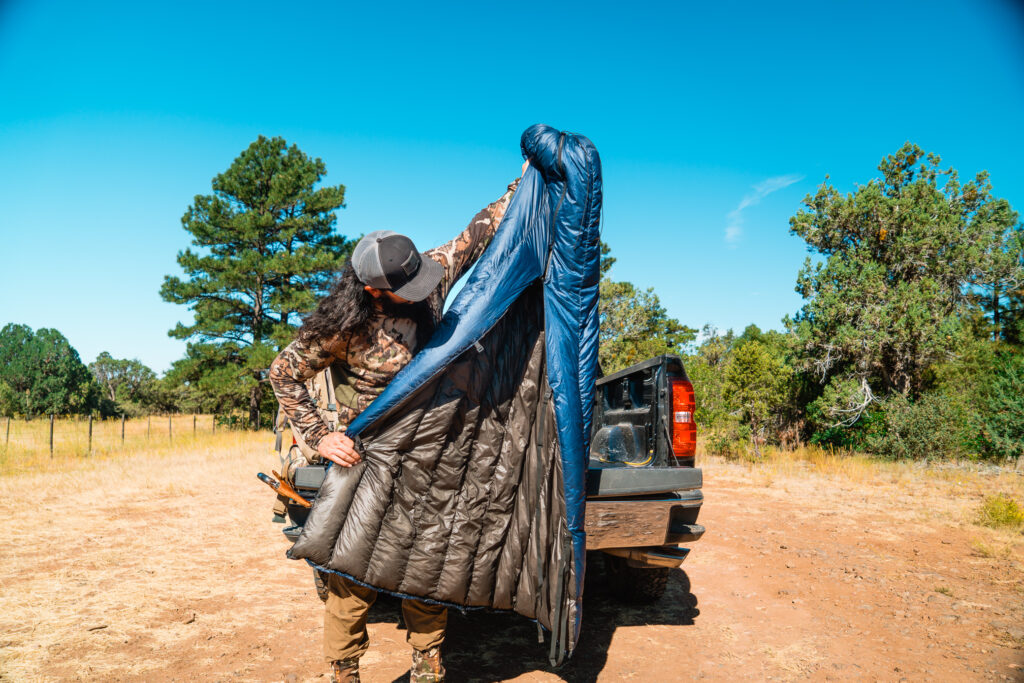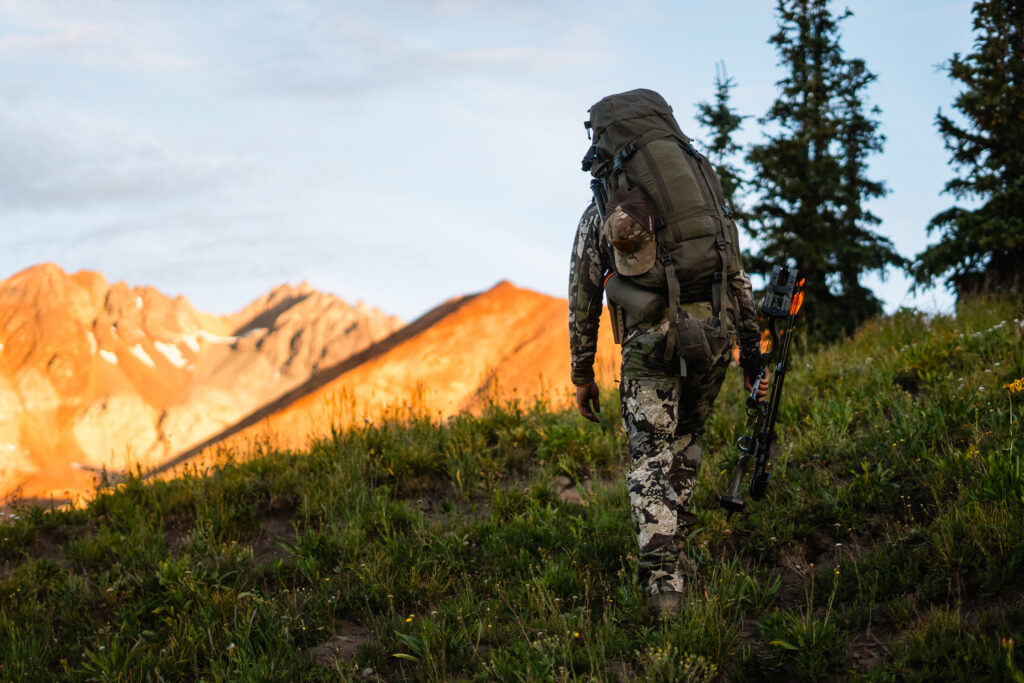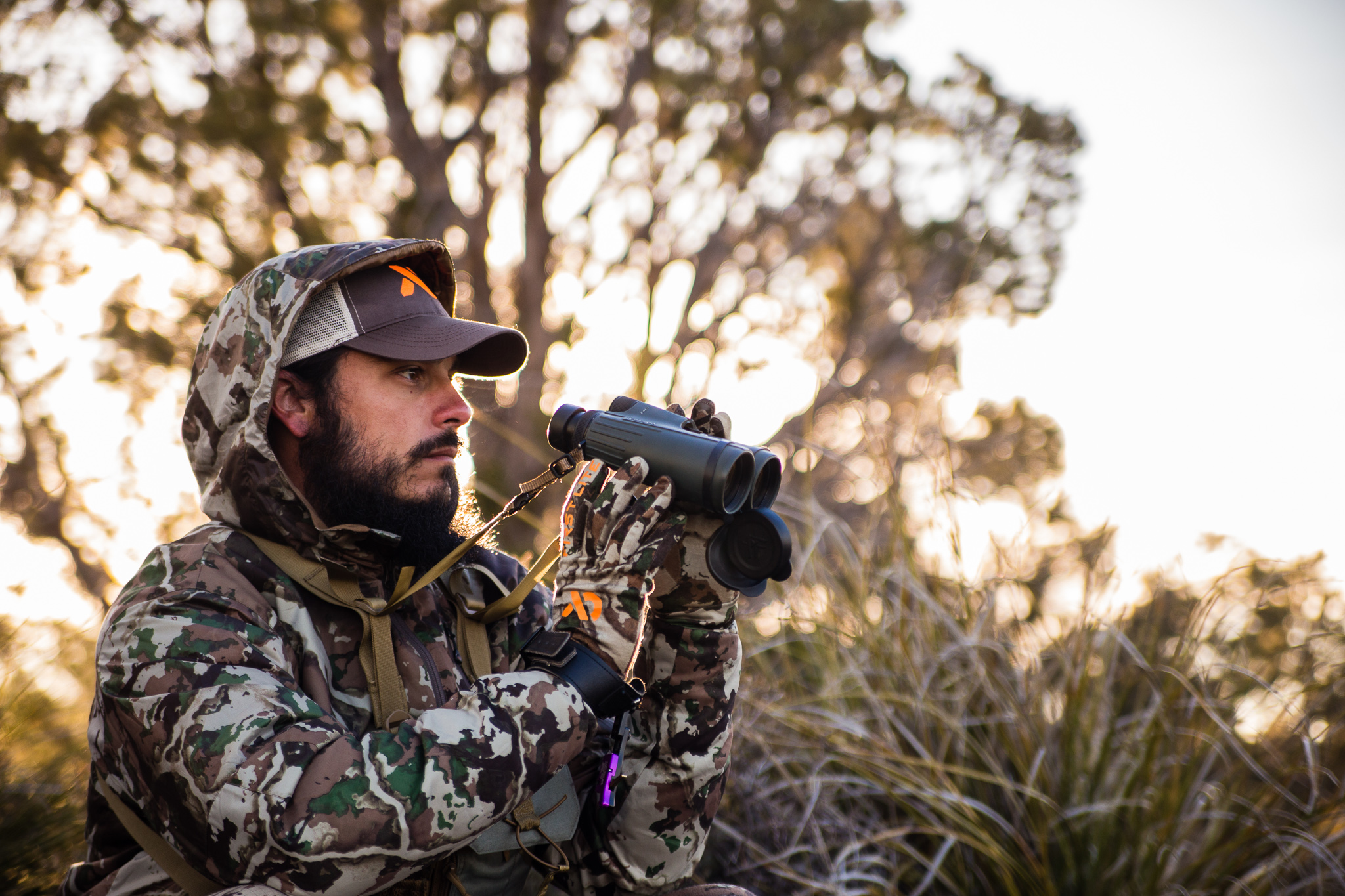
Gear for backpack hunting is something that gets no shortage of attention. It’s for good reason too. What we bring with us into the backcountry are items that we need to have full trust in. Finding one system is time-consuming enough. The different seasons though, being early, mid, and late pose different conditions, which can call for different choices in gear. This is especially true with sleep systems. This past early season I found what I believe is my best early season sleep system yet.

As far as sleep systems go, the first area of importance for me is the shelter. You need somewhere to call home, weather out storms, and even store some extra gear. Argali has been at the top of my list of shelters for the past few years and their new Owyhee 1p is absolutely perfect for trying to keep things as lightweight as possible.
Along with being a shade over 2 pounds with tent, insert, and stakes(14 oz without insert – floorless mode) this isn’t your typical coffin-like 1 person shelter. There is plenty of room on either side of me for my phone, a book, extra clothing, etc. And the vestibule is plenty big. I can fit my bow, backpack, and bino harness with nothing hanging out of the side. With that, I can also choose to set it up with a trekking pole if I am trying to save as much weight as I can. It might be the perfect 1p backcountry shelter.
I’m an inflatable sleeping pad kind of guy through and through. After one too many miserable nights on an old-school foam pad, I went inflatable and never looked back. 10 years of backpack hunting later, I am now sleeping very well on the Nemo Tensor Alpine sleeping pad.
This is an insulated pad meant for sub-zero temps. It’s actually rated down to -20 degrees. Traditionally, more warmth means more weight. That isn’t the case here though. At a mere 17 ounces, this pad is a dream. You get the lack of weight without the lack of warmth.
I’ve used this pad from spring through early fall and now will be taking it into the later fall and winter with no reservations whatsoever. It has performed fantastic on all of my trips. Laying on it, I can feel my warmth reflecting back up to me. It’s a wild feeling. In the earlier fall, I just used less insulation on top of me to counteract what I was getting from the pad. I highly, highly recommend this!

Speaking of insulation on top, I have used a quilt in the early season for quite a few years. I think that they offer the perfect amount of versatility in terms of managing your heat and they are generally more lightweight than traditional sleeping bags. If you get too hot at night, throw a leg out just like you would at home. And if the temps get brisk it’s easy to cinch the quilt down around you. These are more lightweight because they lack the bottom that a mummy bag has. The logic here is that your sleeping pad will insulate underneath you, while the attached quilt insulates on top of you. The quilt I have used for years is the 20-degree Revelation from Enlightened Equipment.
This thing is 19 ounces of backcountry gold. That right there was the first selling point for me as ounces equal pounds. Mine has a cinched foot box, but you can get these with a fully enclosed foot box as well. I got the cinched because if I want, I can open it and use it as a regular blanket. Again, versatility. The two downsides I’ve found from a quilt are not having a hood and an attachment system. Hoods are great for keeping a pillow from sliding out from under you. The attachment system isn’t bad, but there is a learning curve to eliminate drafts. The bottom line is quilts are great if you use them right, and I’ve had great luck with this one.
Back in the day, I used to roll my jacket up and use it as a pillow in the backcountry. These days I bring along a little ultralight pillow that has served me well time and time again. The Aeros from Sea to Summit is a must-have item for me.
This inflatable pillow weighs 2 ounces. That’s it. It comes in its own small stuff sack, has a deflate/inflate valve, and makes a world of difference when it comes to sleeping. Packed up, it’s about as big as a mandarin orange.
I have used this pillow for 7 years I believe. When I first got it I remember thinking it was the best $40 I had ever spent for backpack hunting and that holds up to this day. It’s worked like a champ the entire time. Just remember to deflate the pillow a bit before you leave camp. Sometimes with the heat of the day, the pillow, or even your sleeping pad, can expand. I’ve had internal baffles of both rip in light of that.
A lantern isn’t early-season specific, but it’s definitely a staple in my sleep system. Of course, it’s more of a luxury item, but so is a pillow. Having a dedicated light source for my tent helps me save battery for my headlamp. These also light up the inside of a tent way better than a headlamp does, especially if you hang it from the top of the shelter. The one I’ve been doing this with is the Helix Li from Princeton Tec.

As far as packability goes with the Helix, it’s pretty dang awesome. This lantern collapses down into itself with legs that fold in. And weight is a non-issue here too being 5.4 oz. In terms of versatility, this is not just a standard on/off lantern. It has several different modes(white, red, strobe) with some being dimmable to save battery life or for personal preference. The legs have little hooks on them for hanging and the Helix Li is rechargeable.
As far as downsides go, there is just one thing I’ve run into, but it hasn’t been a huge issue. The Helix turns on by swiping your finger across the front, but there isn’t a lock mode. Only once, and I’ve used this on many trips, I had this lantern turn on inside of my backpack. Luckily, I caught it before hitting the trail, but it’s worth mentioning.

Now, I know this might be late, and that early season is behind us at this point. But, I didn’t want to speak on this particular system until I could speak on it with confidence. And that means taking it through the early season. There is only so much that one can tell from reading specs. It’s real-world backcountry experience that tells you what you need to know about things like this. Fortunately, the early-season sleep system I’ve outlined above has truly served me well in the real world and in turn, has earned my trust.
As an Amazon Associate, I earn from qualifying purchases


Copyright 2019 Dialed In Hunter
Design by NXNW.